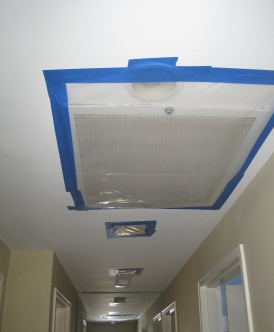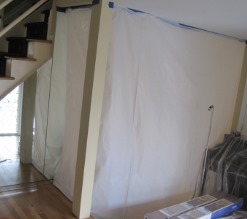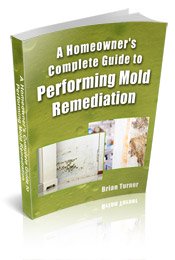Find a Mold Specialist Now
Click or Call, Toll-Free 24/7
Black Mold Treatment
Once a mold problem has been identified in your home, it is important to begin a black mold treatment as soon as possible in order to avoid the health dangers of black mold. The treatment process needs to be handled with care though, because there are different cleanup methods that should be used depending on the types of materials that were affected by the mold.
Sealing off the Area
 |
 |
The first step is to protect yourself and the rest of the building from cross contamination. Once the area of mold has been determined, the perimeter of the area should be sealed off with plastic sheets and duct tape. Be sure to block any vents, cracks or windows because they can spread the mold spores if they are open. Also, it is best to setup a filtration system and a negative air machine in order to minimize the mold spores that are in the air.
Protective Clothing

Because of the dangers of black mold, you must be sure that you are protected with the correct type of clothing. Wearing an N95 face mask is important to avoid inhaling the mold spores. Additionally, rubber gloves and a protective biohazard suit are recommended to prevent any skin from coming into contact with the mold. You should also wear a hood to prevent the mold spores from getting into your hair. Be careful about removing the clothing before spending time in other areas of the home, because the mold spores can be moved into other rooms if they are on your clothes.
Getting Rid of Items
One of the hardest aspects of black mold treatment is getting rid of some of the items that you may not want to throw away. There are certain types of materials that cannot be cleaned to remove the mold, and you might have to simply throw them away and replace them. These materials include items such as paper, furniture, carpet, insulation, wallpaper and linoleum. Anything that is being thrown away should be double bagged before removing it from the contaminated area.
HEPA Filtered Vacuum
Any area that has been affected by the mold should be vacuumed with a HEPA filtered vacuum in order to minimize the dangers of black mold during the cleanup process. The vacuum will prevent the spores from getting into the air, and all surfaces should be vacuumed. You should also HEPA vacuum the area when the cleanup is complete.
Cleaning Supplies
Common household cleaners or bleach shouldn't be used to clean up the mold problem, because these items are not an effective black mold treatment. The problem with these standard cleaners is the fact that they may not kill all the mold spores, so the mold may still be present even after the cleaning is complete. Instead, use a high quality biocide that will kill the mold and prevent it from returning.
Finishing Touches
Once the area has been cleaned and sterilized, there are a few steps that can be followed to prevent the mold from returning. Some surfaces can be encapsulated to prevent moisture from getting in. We recommend consulting with a mold specialist before encapsulating any surfaces, though, because the technique is not appropriate in all circumstances.
Also, be sure that the area is completely dry before rebuilding, because any type of moisture may cause the mold to start growing again. All porous materials should be replaced; it is not a good idea to re-use items such as sheetrock, insulation, or carpet.
It is extremely important that you recognize the dangers of black mold and you follow the proper black mold treatment plan. Each mold problem is different and requires a plan tailored for that specific situation. We recommend consulting with a mold specialist so that you can be sure the job is done right. Many mold specialists offer free consultations so even if you plan to do the job yourself, you can get some free expert advice. Follow this link for a list of mold specialists near you.
Return From Black Mold Treatment To Our Getting Rid Of Black Mold Page
Black Mold Health Symptoms Home Page





